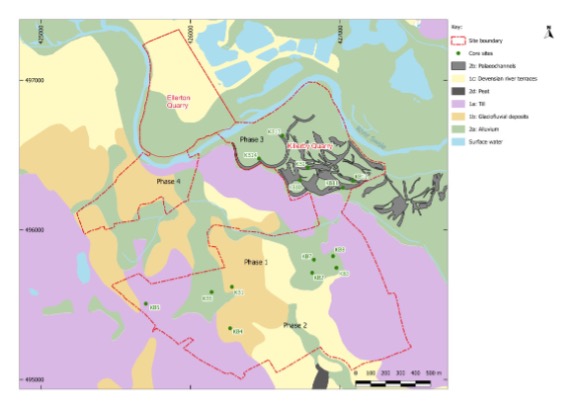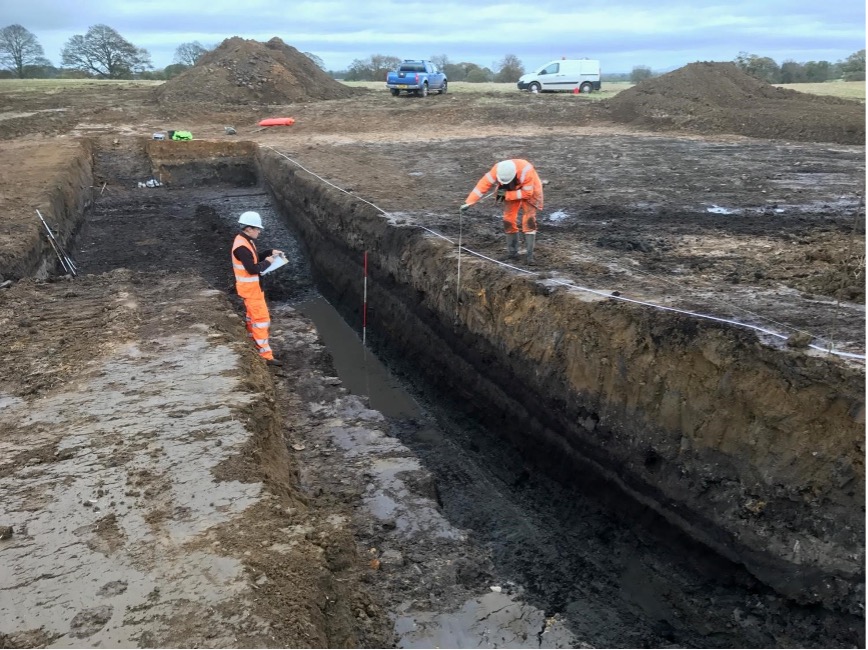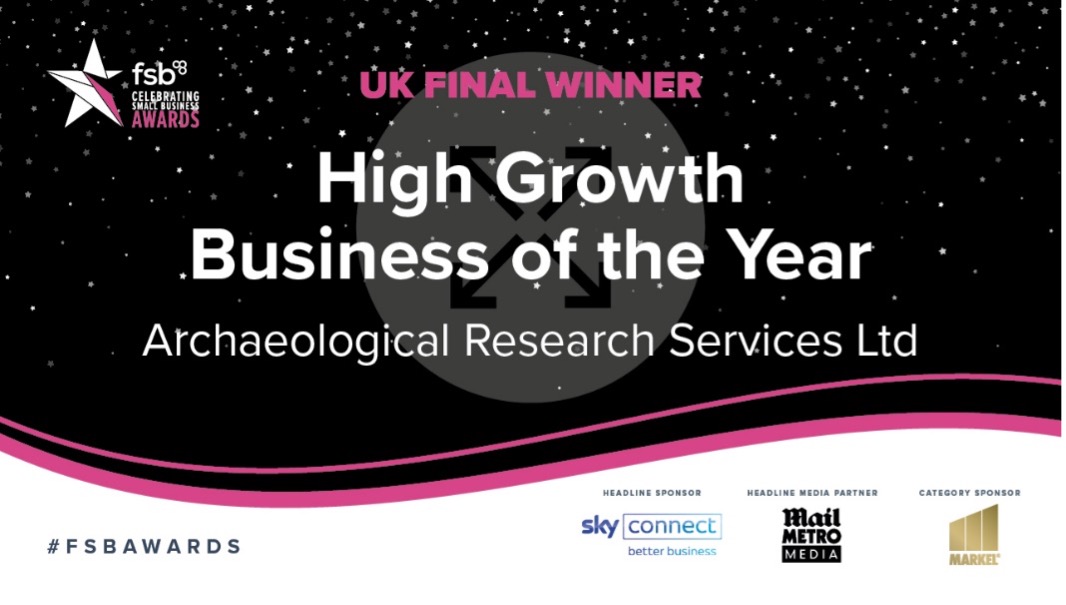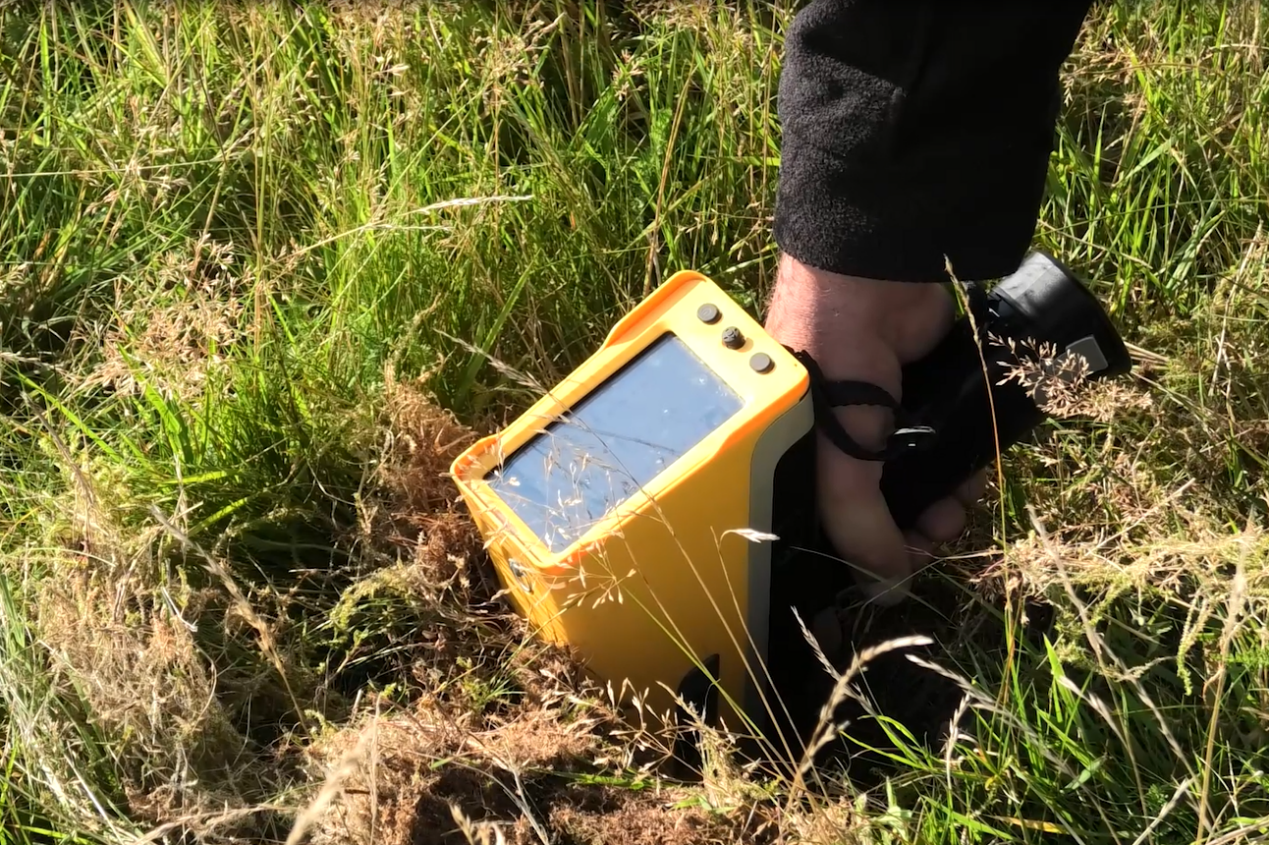Archaeology is an interdisciplinary field that combines geology, biology, chemistry, materials analysis, and much more. One technology with the potential to transform archaeological field work is portable X-ray fluorescence (pXRF), which makes it possible to obtain real-time geochemical data in the field. However, the widespread adoption of pXRF on archaeological excavations has been slow.
One organization that embraced pXRF is Archaeological Research Services Ltd, a UK-based provider of archaeological and heritage services. Though laws vary around the world, in many instances, whenever infrastructure is built, an archaeological contractor is commissioned to evaluate any potential impacts to archaeological and heritage assets. Consequently, archaeologists in this field work closely with the construction industry, developers, and governments. And like any business, archaeology companies are looking for ways to differentiate themselves from competitors and, most importantly, deliver the best possible service to their customers and wider society.
I sat down with Dr. Roger Doonan, Head of Specialist Services at Archaeological Research Services Ltd, for a conversation about how his company uses pXRF and the potential the technology has to transform archaeological field work.

A geoarchaeological landform element map
Q: Tell me about yourself and what you do?
A: My name is Dr. Roger Doonan, and I’m an archaeologist with a background in archaeological science. I spent over twenty years lecturing in universities, which is where I first became familiar with portable XRF (pXRF) and taking geochemistry out of the lab and into the field where it was going to be more useful to archaeologists.
I have recently taken on the role as Head of Innovation, having spent the last three years as the Head of Specialist Services within Archaeological Research Services Ltd, a UK-based archaeological services company. Specialist Services is the engine of innovation within the company, and it tends to be where the science and technology applications for archaeology are housed. One of the key benefits of pXRF is that it breaks down barriers between lab and field staff by enabling users to do lab-type things in the field. This creates some great conversations as the sites are being excavated!
Q: Tell me about your organization?
A: It’s a remarkable company and unlike any other commercial archaeology firm or university department that I’ve encountered. First, the company has an amazing team of people who are enthusiastic, competent, and dedicated to providing a professional service to our clients. Everything we do is aimed at creating value for our clients and wider society as we investigate archaeological remains and discover new knowledge. We are all keen to inspire people!
The organization has multiple offices across the UK and employs around 100 people. We offer a full service to clients ranging from initial consultancy to all types of fieldwork, final publication, and heritage interpretation. We work on huge infrastructure projects, like HS2—a new high-speed railway—where we pioneered geochemical analysis in situ through to bespoke rewilding projects that involve river and woodland restoration.

An archaeological trench with two archaeologists that are mapping stratigraphic layers.
Q: How did you decide to incorporate XRF into your operations?
A: The decision to use pXRF was straightforward. The ability to generate geochemical datasets quickly and efficiently was irresistible. Conventional lab work relied on lengthy sample taking procedures and then months of waiting to get the results. By the time the results came back the site was often fully excavated. The ability to get this data up front meant we could use the geochem data to inform our decisions in the field and not simply reflect on them during post-excavation processing. It really has been revolutionary.
Q: How do you use the test results to inform your excavation strategy?
A: With pXRF we are not as much interested in the absolute value of the specific indicator elements but rather how their values vary across space. We rely on a solid core of indicator elements, such as phosphorus (P), copper (Cu), zinc (Zn), lead (Pb), calcium (Ca), and potassium (K), and we plot their variance across space. The spatial distribution of elemental variation tells us about what types of activities took place where. It’s kind of like reading invisible residues in the soil. Soil chemistry isn’t new but recognizing the spatial variation at a high resolution is, and the results are stunning. For the first time, we can start to see these ghosts in the soil that can help us interpret what activities were taking place thousands of years ago. Critically, pXRF also helps us understand where activities didn’t take place, and this information is also very important as we can use it to plan development to avoid or mitigate damage to archaeological deposits.
Q: How would you sum up the value pXRF has brought to your organization?
A: It’s at the heart of our culture of innovation, and we are finding new applications all the time. It signals to our staff that we are about doing things differently and that we embrace innovation. It shows our clients that we are prepared to think about the problem at hand with the aim of doing things better rather than just plodding along and doing the same old tried and tested routines and putting up with sub-optimal performance.
Q: How do your employees use your pXRF analyzer?
A: Predominantly for soil chemistry at all stages of investigation, from prospection to excavation. We also use it routinely to analyze artifacts and other finds and increasingly for applications like analyzing bones and environmental samples.
Q: What pXRF analyzer and settings/calibrations do you use?
A: We use the Vanta™ VMR model with a number of additional calibrations, including for rare earth elements (REEs). The overall control that the Vanta analyzer offers allows us to trim our method so that we can work in a commercially viable manner while still delivering top-notch results.
Q: What led you to select the Vanta handheld XRF analyzer?
A: It’s a good instrument. Analytically, I don’t think there is much difference between the market leaders, but you might disagree! For us the team were really attracted by the opportunities offered by the Evident Connect cloud. This offers us real advantages in terms of remote data processing and feeding back to people in the field. The future is having instant access to data collected in the field and letting that inform the progress of the survey.
Q: What value does pXRF bring to the organization?
A: It brings commercial value for sure. We have effectively led the way and created the market within our sector. This has given us an advantage and has, thanks to a brilliant team, resulted in realizing real commercial value. We won the national final for highest growth business, and our new geochemical service contributed greatly to this.

It was a great result, and it surprised a lot of the wider business community as archaeology is not something often thought of when you think of innovative and financially successful businesses.
Q: You recently received an award for geochemical survey in construction. Can you tell me about that?
A: We’re so proud of this award! It’s one thing when archaeologists tell each other how good they are, but another when the whole construction industry is saying how good archaeologists are with geochem!
I’m also proud to share that we recently received a prestigious King’s Award for enterprise, which recognizes outstanding UK businesses. This award was for innovation and the role pXRF and geochemical analysis played in our Landscape Prospection Service.
This award was the result of brilliant and inspiring leadership by our managing director, Dr. Clive Waddington, and down to the dedication and professionalism of our brilliant team.
People don’t often associate innovation with archaeology as archaeologists tend to rely on tried and tested methods. While innovation is often thought of as being about new tech, we learned that the tech and science are critical, but you need to reassure clients, train and invest in staff, make sure all the legal requirements are in place, and, critically, make sure it makes commercial sense. A good innovation is one that sustains and is commercially viable, that staff are keen to adopt, and that clients have confidence in.
Q: Any final topics or insights about using XRF that you’d like to share?
A: For us at ARS Ltd, we are using pXRF to give us information about the past to help guide development. A central point for us is that we can now know things about the past without digging. It doesn’t mean that we now don’t dig, but it means we can dig less and when we do, we can do it better since we are better informed. This has huge implications for the wider environment. Digging always involves heavy equipment with a big carbon footprint. Plus, soil disturbance from excavating degrades soil, especially in terms of organic carbon. This means that pXRF is helping us to help our clients reduce their overall carbon footprint, which is very important in the construction industry as we all aim for net-zero by 2050. It wasn’t what we anticipated at the start of our journey, but as we began to realize the full impact, it has been great to recognize that we can play a role in reducing our impact on the planet. There is, of course, a strange symmetry with what we study with pXRF. Ultimately, by using pXRF analysis to identify chemical signatures in the soil we are recognizing how ancient communities impacted their environment millennia ago. That their signatures of practices have endured for so long and are still detectable today is humbling when we consider that these past people lived meaningful lives but with much lower levels of material consumption. It highlights the dramatic impact we are having on our environment today, and, with that in mind, the environmental benefits of using pXRF are drawn into sharp focus.
Related Content
How Archaeologists Use XRF to Source Stone Artifacts
.jpg?rev=615A)

